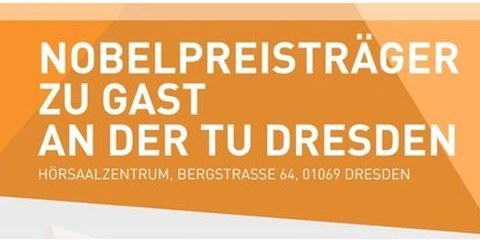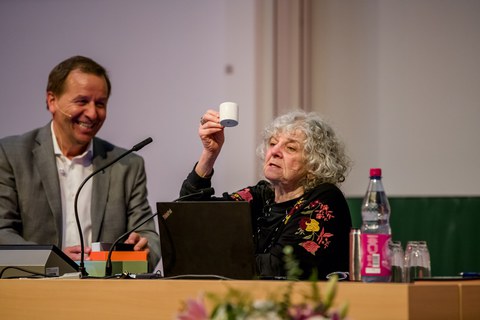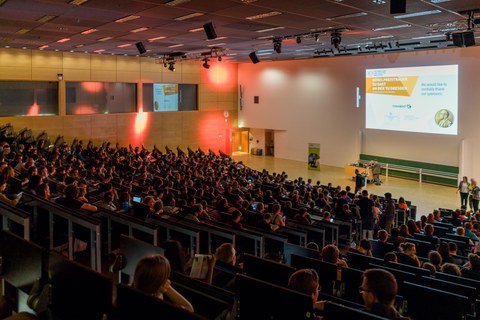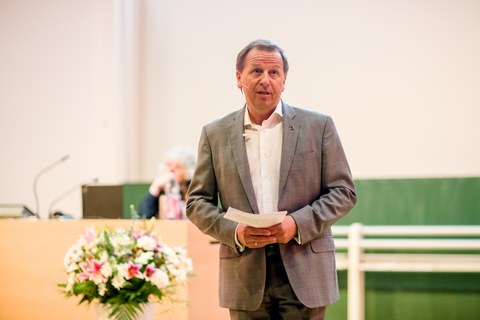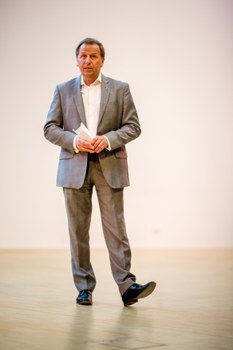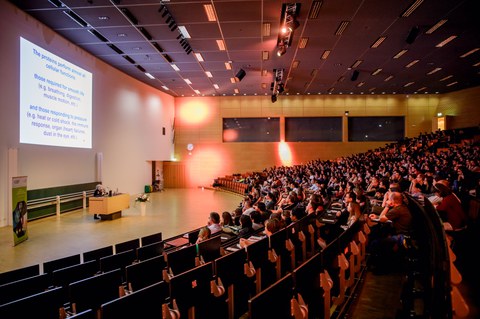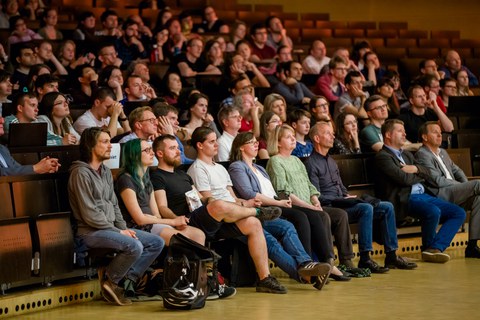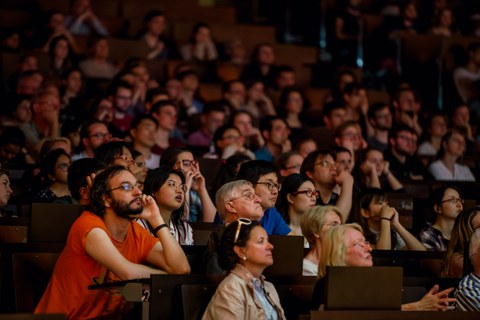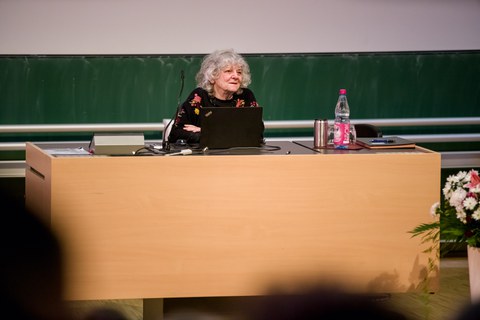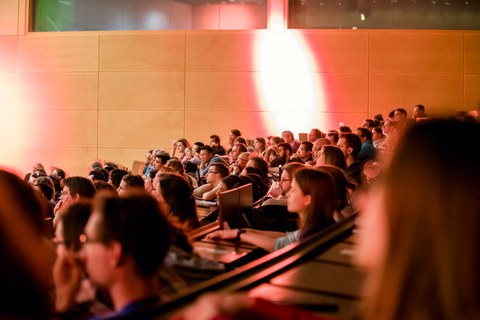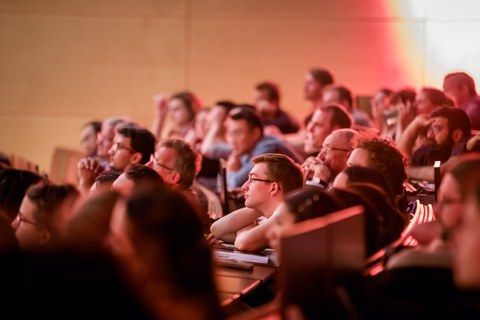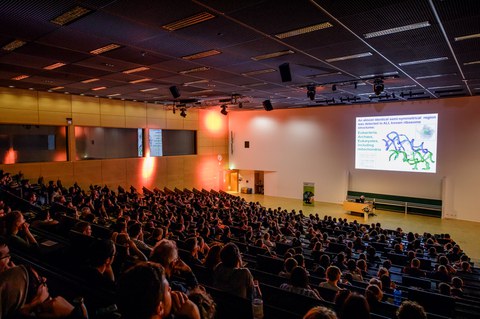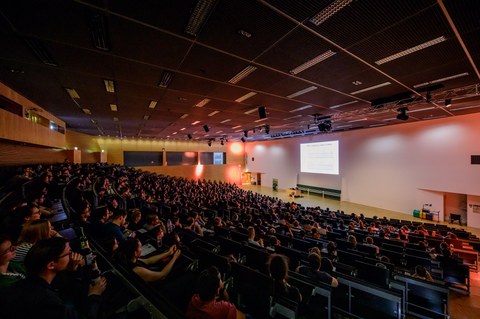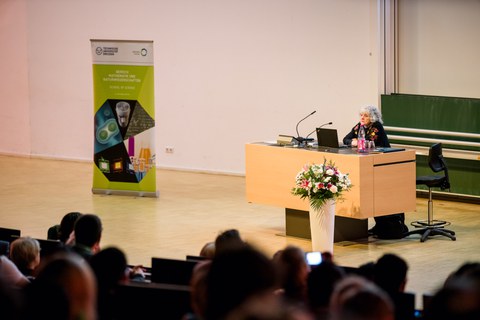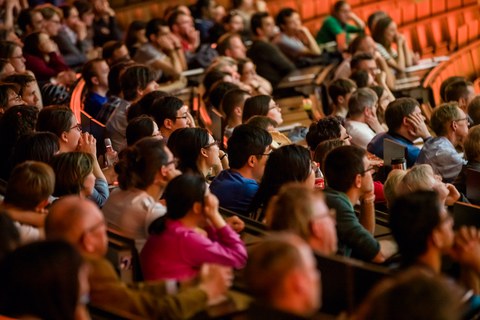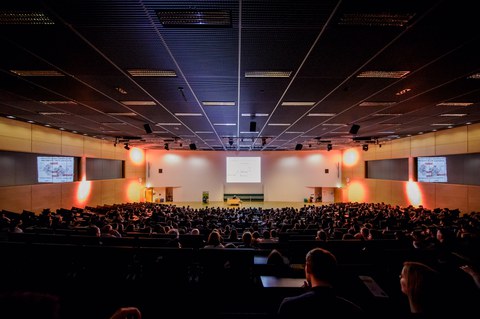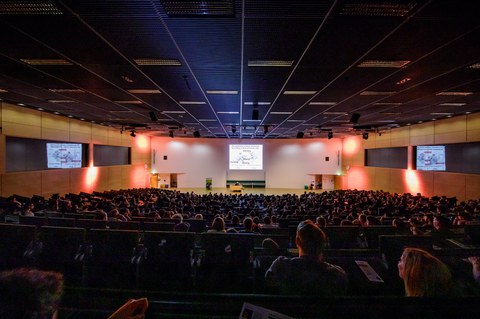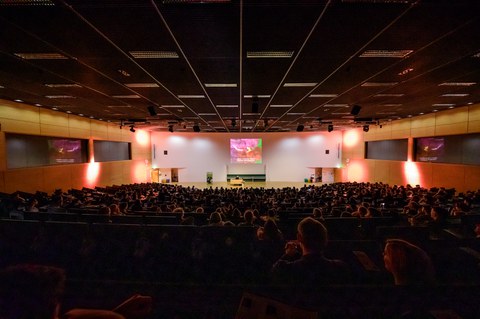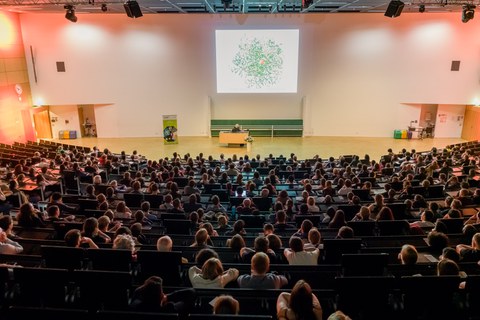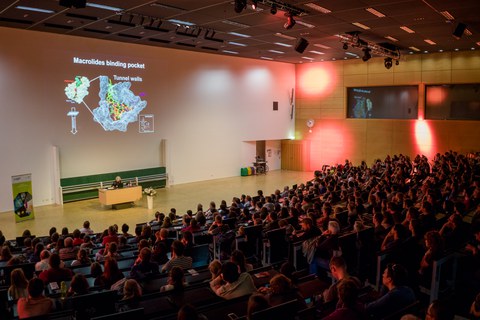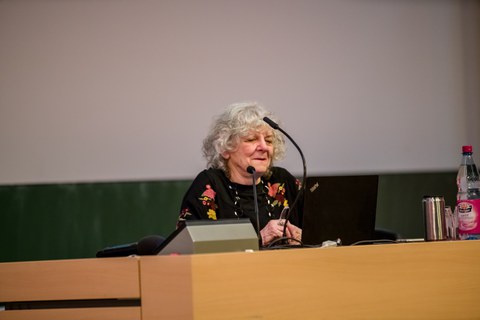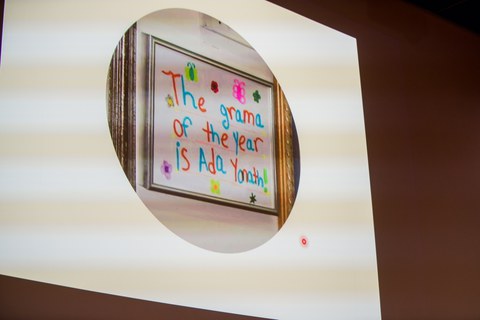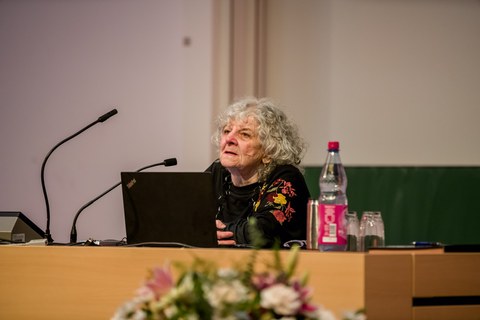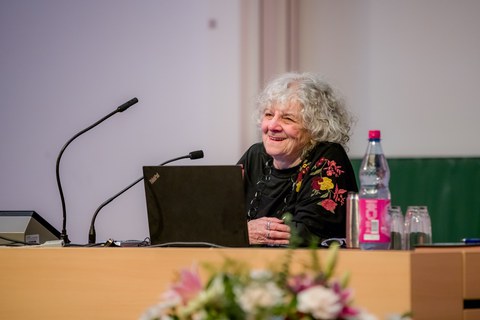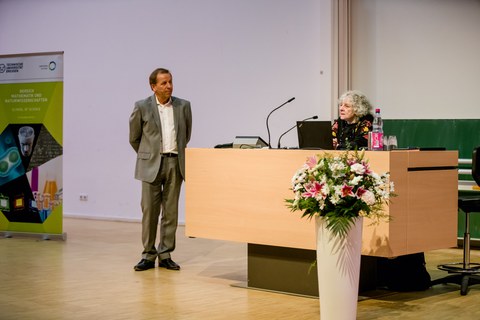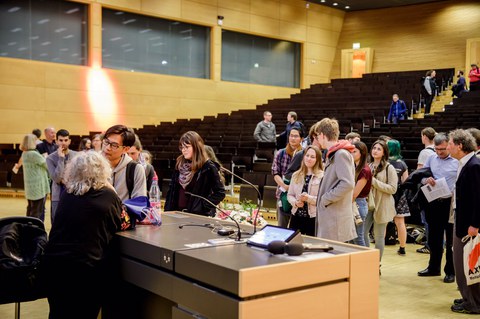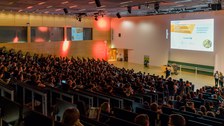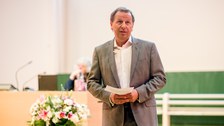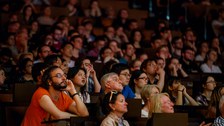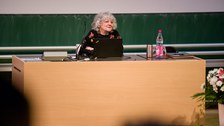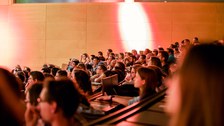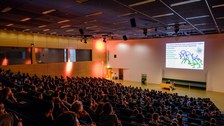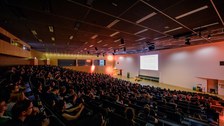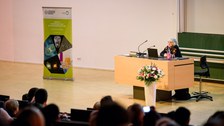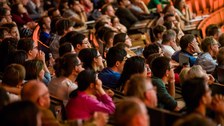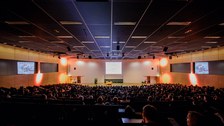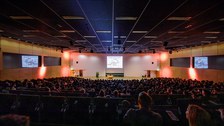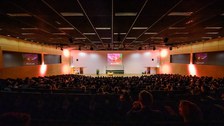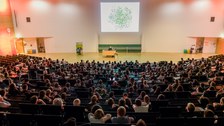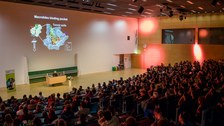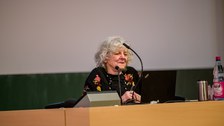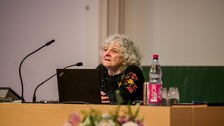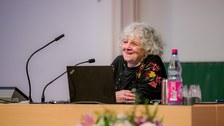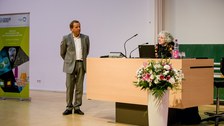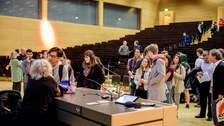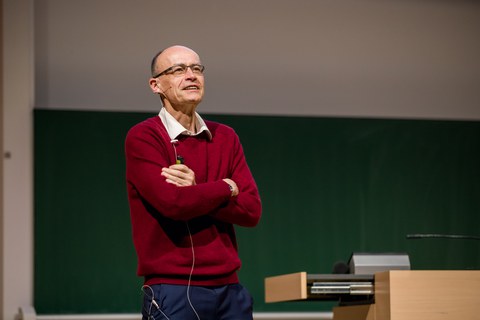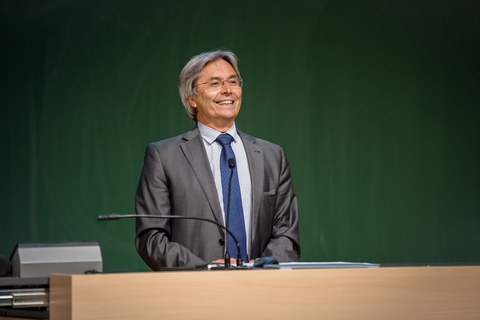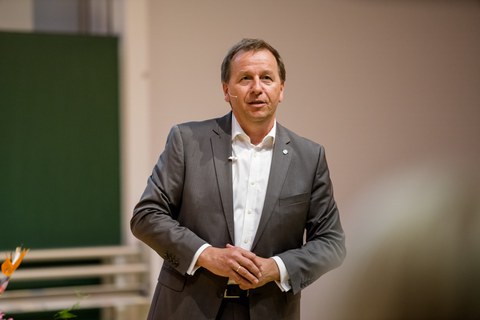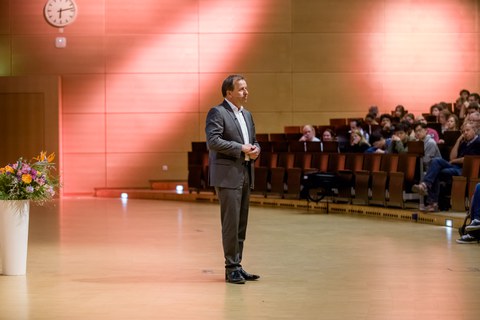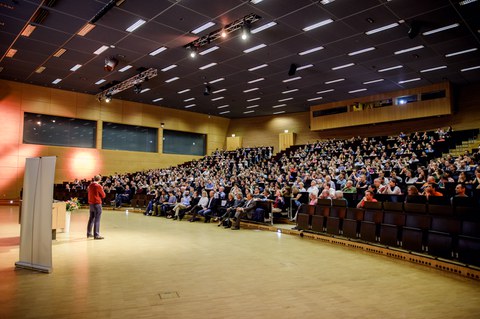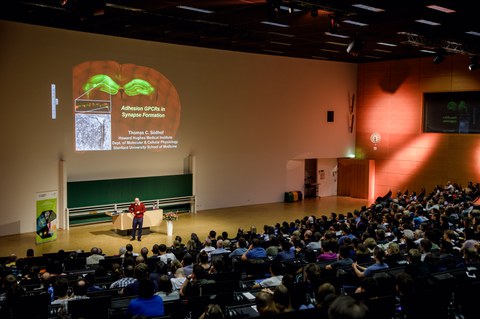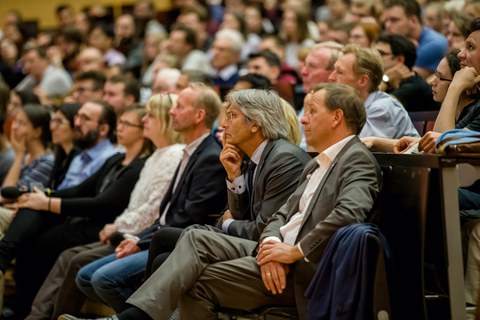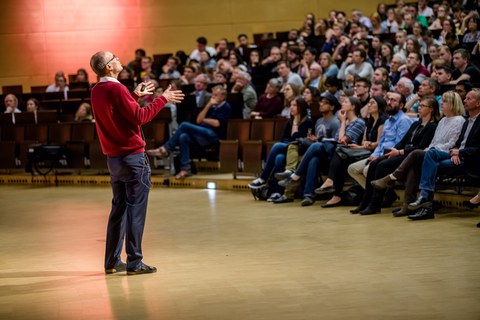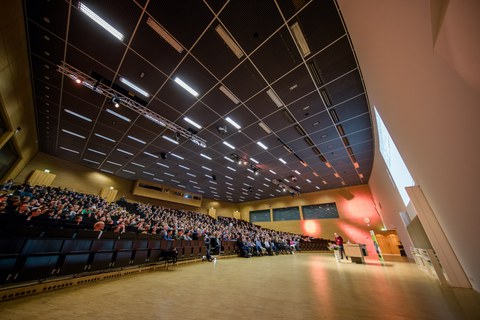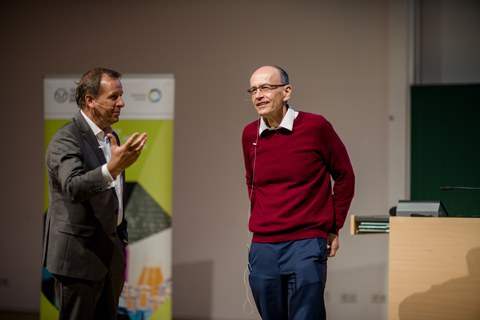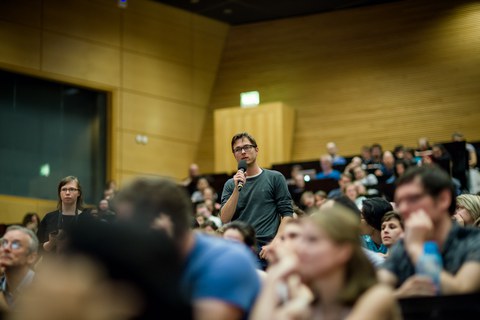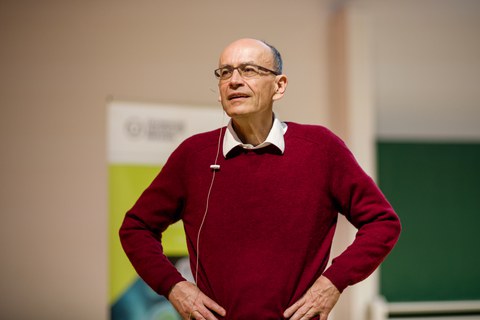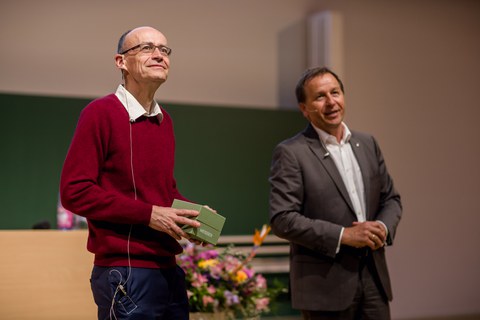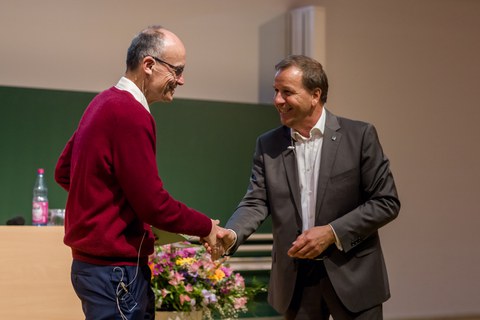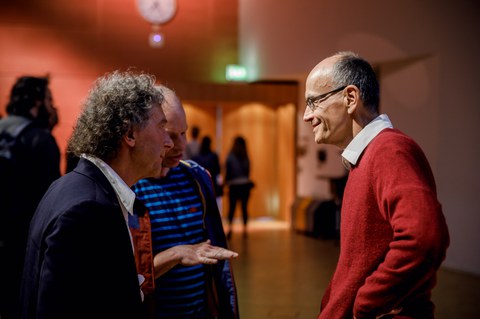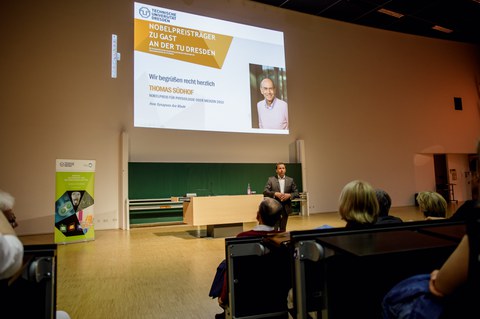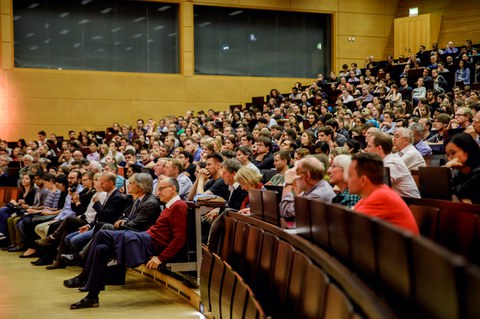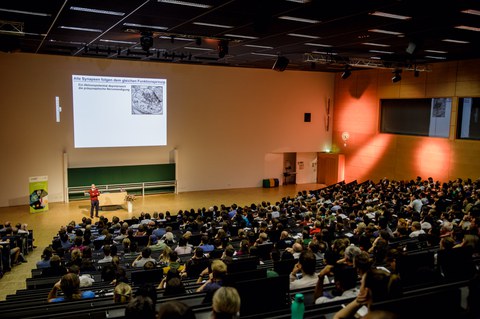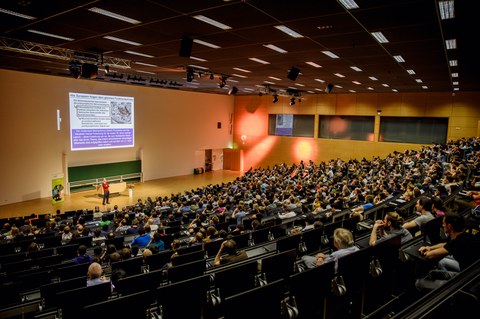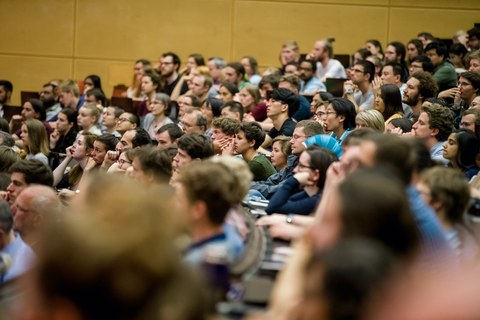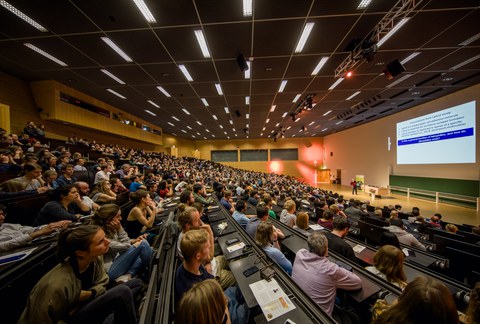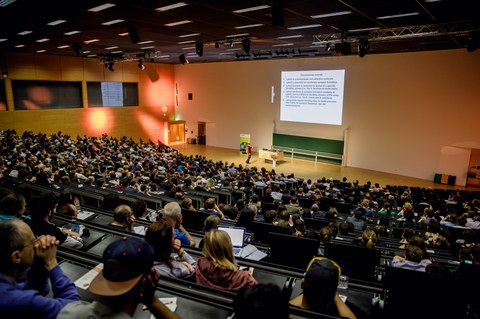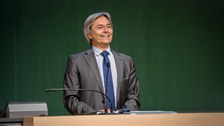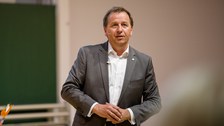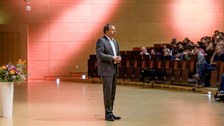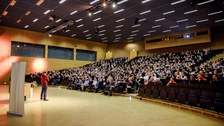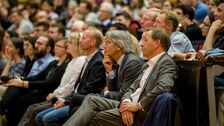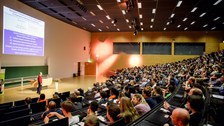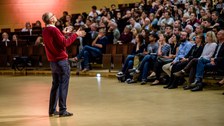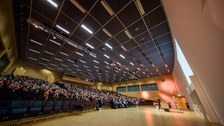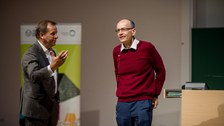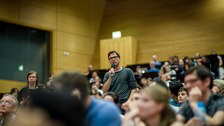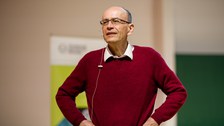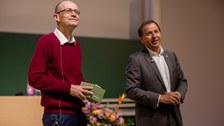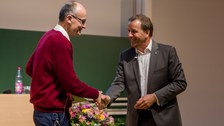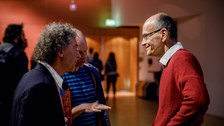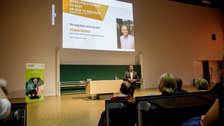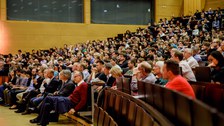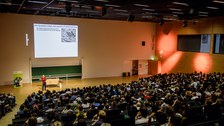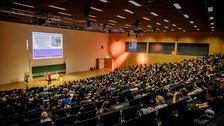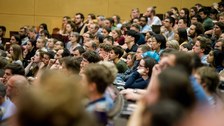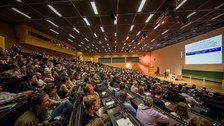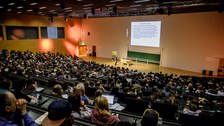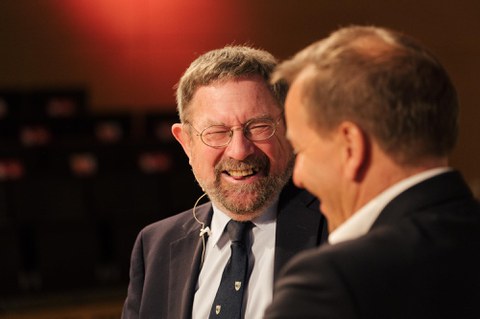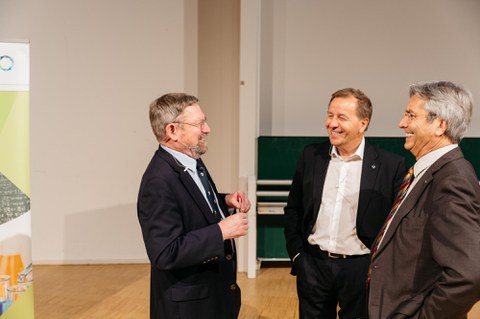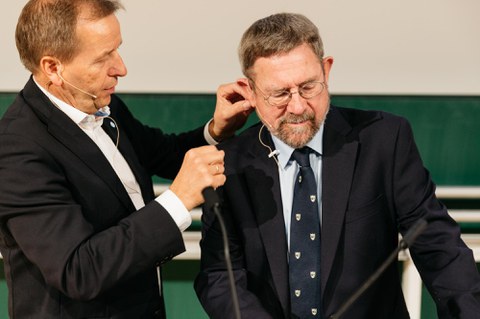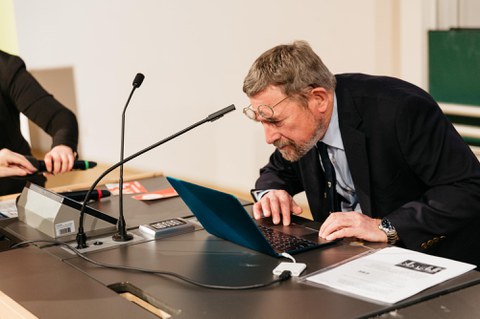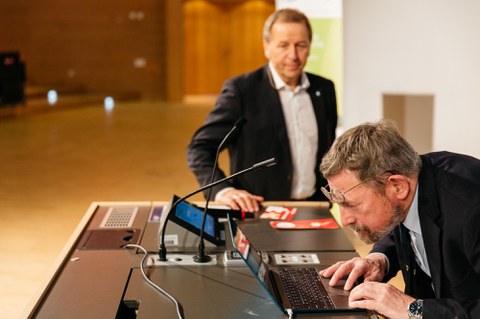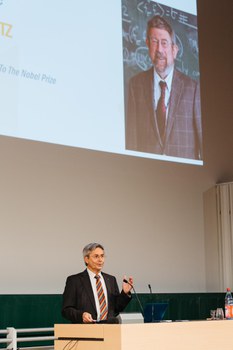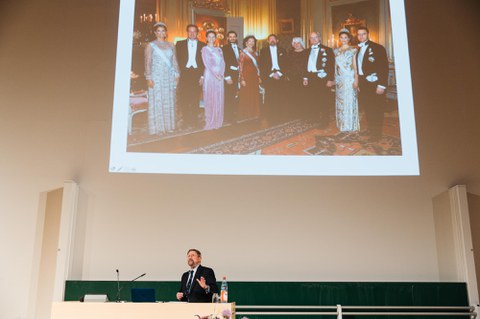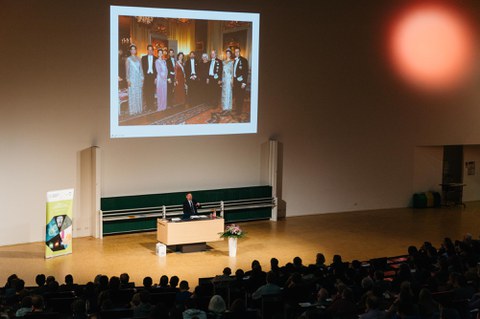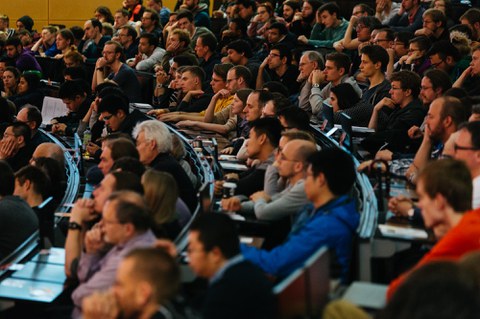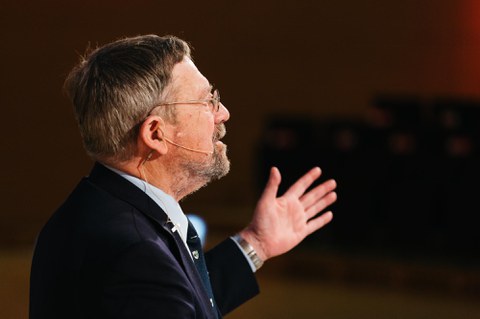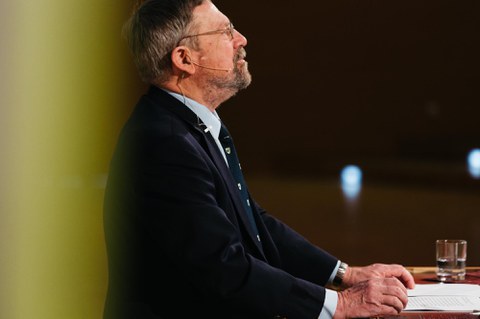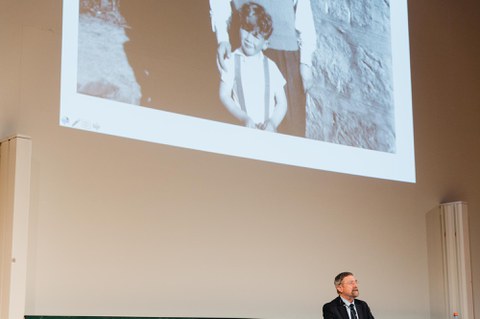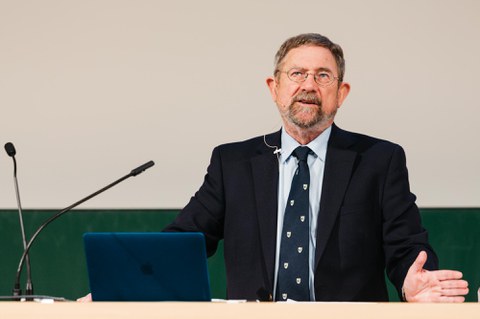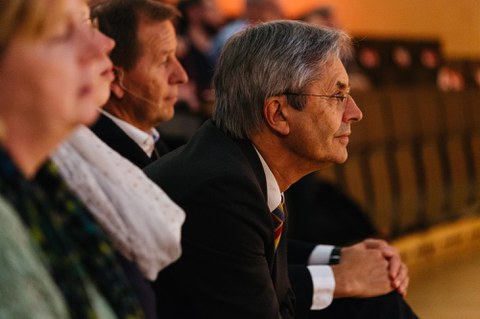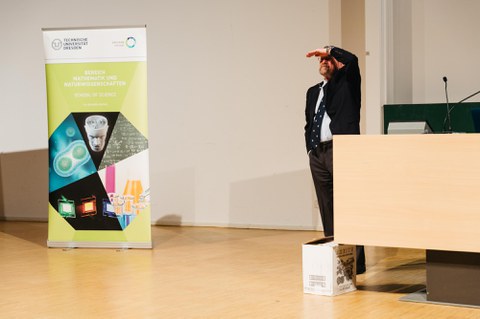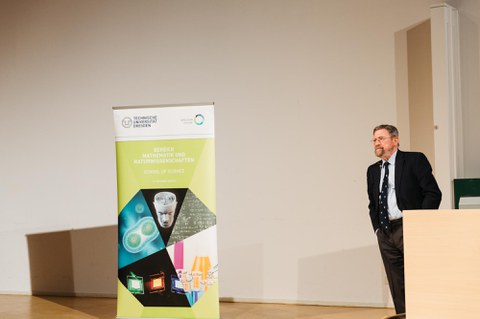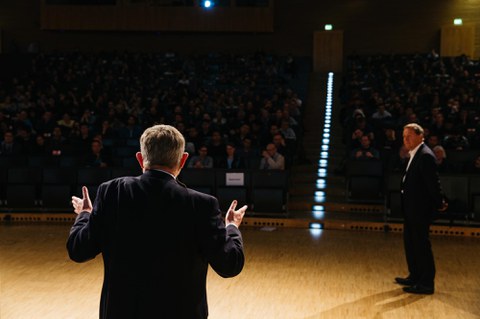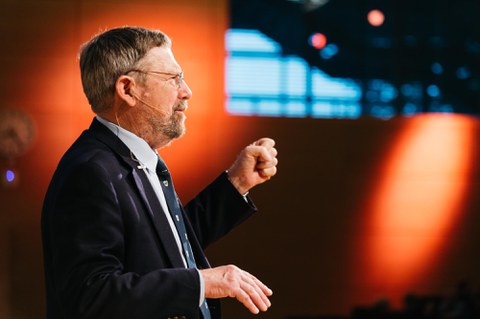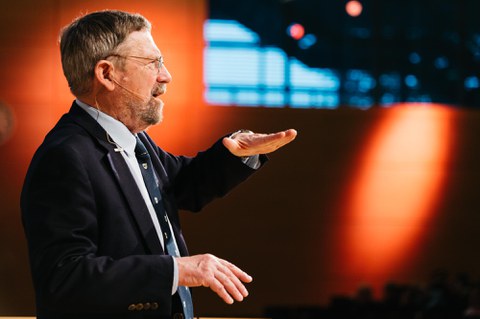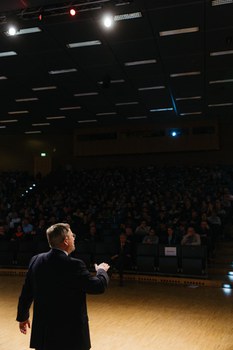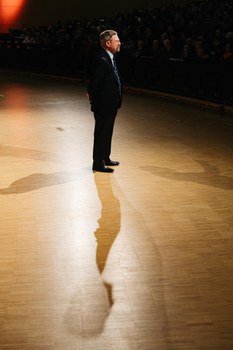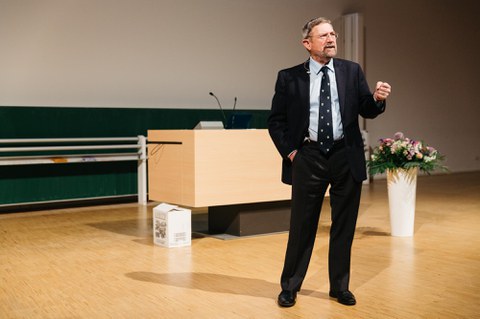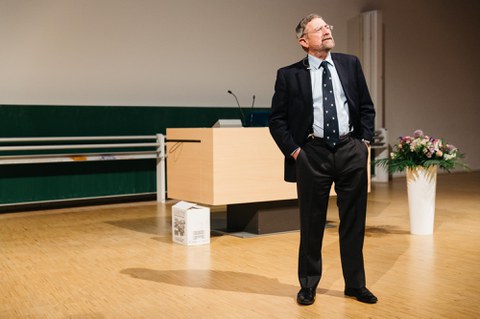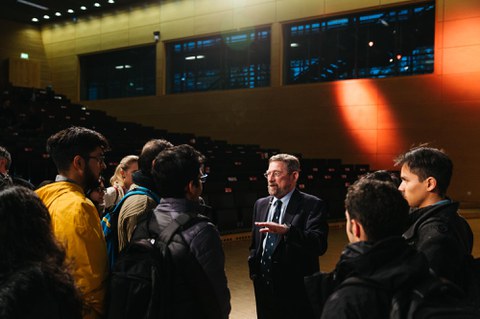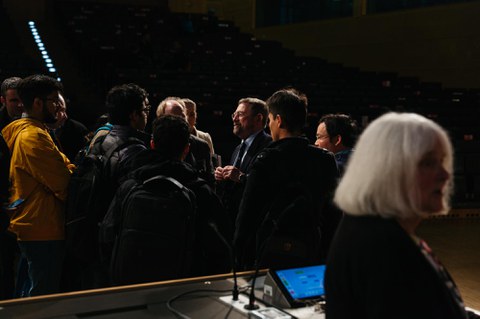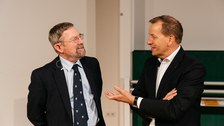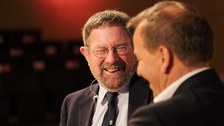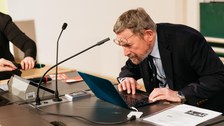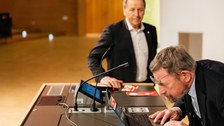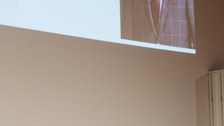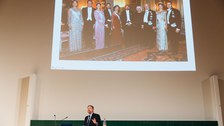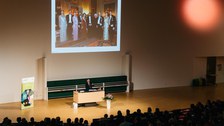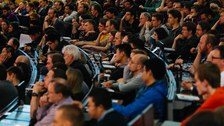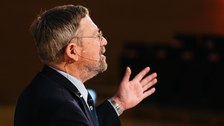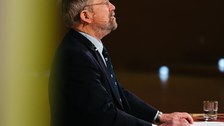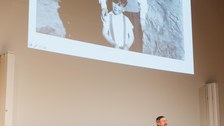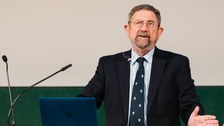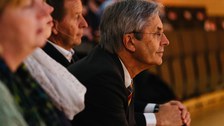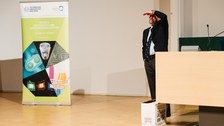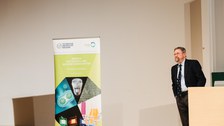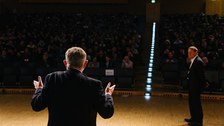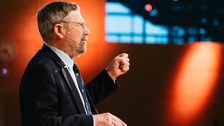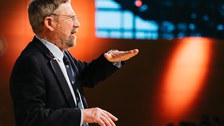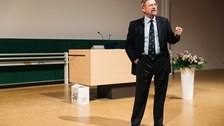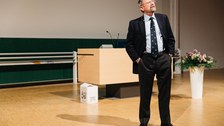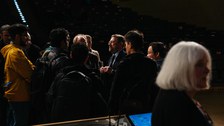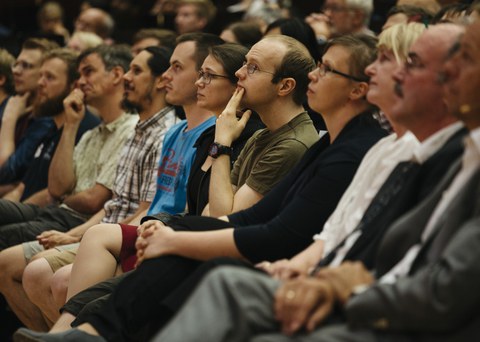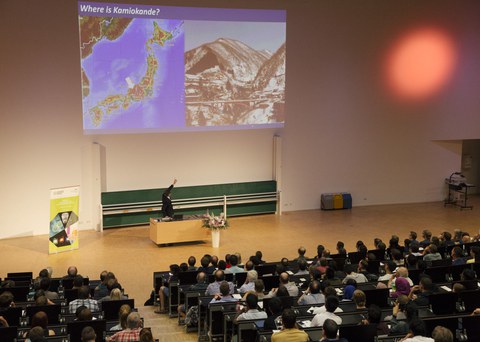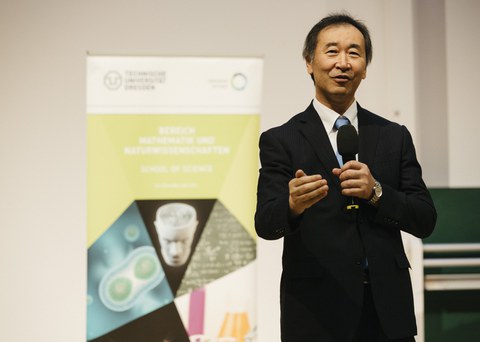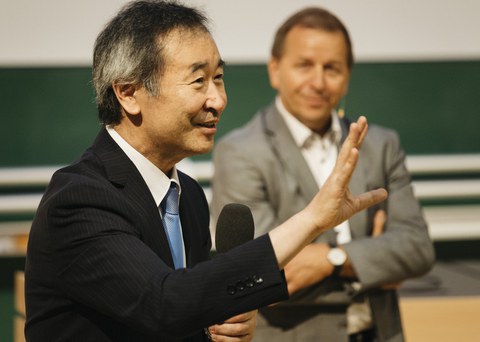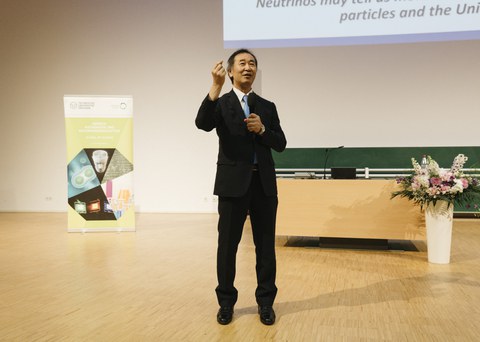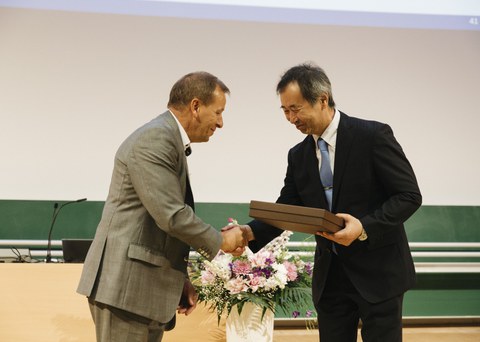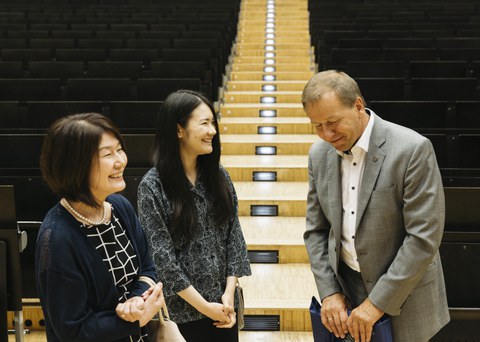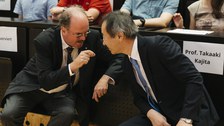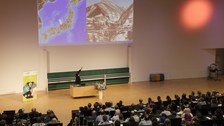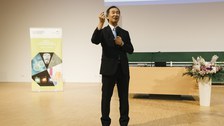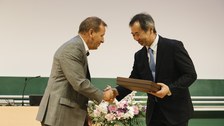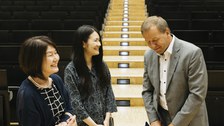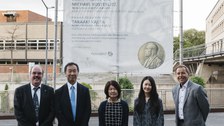Nobelpreisträger zu Gast an der TU Dresden 2019
Inhaltsverzeichnis
Wir bedanken uns herzlich bei unseren Förderern: Novaled, das Hotel Taschenbergpalais Kempinski und die Gesellschaft von Freunden und Förderern der TU Dresden e.V.
Ada Yonath
2009 Nobelpreis für Chemie
Mittwoch, 24. April 2019 um 19 Uhr: Ribosomes: A Connection Between The Far Past & Near Future (Vortragssprache: Englisch)
Ada Yonath (*22.06.1939, Jerusalem, Israel)
Weizmann Institute of Science, Rechowot
Geboren 1939 in ärmlichen Verhältnissen in Jerusalem, erinnert sich Ada Yonath insbesondere an ihre Neugier, die Prinzipien der Natur zu verstehen. Nach dem Tod ihres Vaters – Yonath war gerade elf – unterstützte sie ihre Familie mit verschiedensten Nebenjobs. Trotz ihrer konservativen Umgebung und traditionellen Familienwerte unterstützte die Mutter ihre Tochter bei ihren schulischen Ambitionen. Nach ihrer Wehrpflicht bei den Sanitätstruppen der israelischen Armee studierte Yonath an der Hebräischen Universität Jerusalem Chemie, Biochemie und Biophysik. Ihre Doktorarbeit verfasste sie am Weizmann Institute of Science, wo sie später, u.a. nach einer Zwischenstation am Massachusetts Institute of Technology (MIT), das erste israelische Labor zur biologischen Kristallographie gründete – ein bedeutender Schritt zu ihrem wissenschaftlichen Verdienst um die Kristallisation und Röntgenstrukturanalyse von Ribosomen, der ihr den Nobelpreis einbrachte. Noch heute forscht Yonath am Weizmann-Institut.
Das erste Schloss der Ribosomen-Maschinerie – ihren Aufbau und Arbeitsprozess – knackte Yonath in zwei Jahrzehnten Forschung durch eine detaillierte Röntgenstrukturanalyse. Dieses Verfahren stellt atomare und molekulare Strukturen dar. Röntgenstrahlen erzeugen ein Brechungsmuster an kristallisierten Molekülen, woraus deren Aufbau berechnet werden kann. Die Crux: Mit hunderttausenden Atomen galten Ribosomen als zu groß und komplex für eine Kristallisation – bis sie Ada Yonath durch die Entwicklung passender Methoden meisterte. 1995 gelang ihr der Durchbruch, durch eingeschleuste Markierungen in den Untereinheiten der Ribosomen aussagekräftige Daten zu generieren.
Mit der Inspiration, durch die ihr in der Max-Planck-Arbeitsgruppe "Ribosomenstruktur" die Kristallisation und Röntgenstrukturanalyse von Ribosomen glückte, erleuchtet die Biologin am 23.04. um 19 Uhr das Hörsaalzentrum der TU Dresden. Das Verständnis um die zellulären Proteinfabriken dient unter anderem zur Herstellung effektiver Antibiotika, die Ribosomen von Erregern attackieren.
The Ada Yonath Story
The Ada Yonath Story © American Committee For The Weizmann Institute Of Science Inc
Thomas Südhof
2013 Nobelpreis für Psysiologie oder Medizin
Freitag, 26. April 2019 um 18 Uhr: How Synapses Are Made (Vortragssprache: Englisch)
Thomas Christian Südhof (*22.12.1955, Göttingen, Deutschland)
Stanford University, Stanford
Die Kindheit und Lernneugier des gebürtigen Göttingers prägten nicht nur seine Eltern, beide Ärzte, sondern die familiäre Nähe zur Anthroposophie und Waldorfpädagogik. Seine Großmutter machte ihn mit Goethe und Kant vertraut, lehrte ihn die Wichtigkeit von Bildung und die Spiritualität von Werten. Südhof interessierte sich für fast alle Schulfächer, klassische Musik und nennt seinen Fagottlehrer den wohl einflussreichsten Lehrer seiner Schulzeit. Nach seinem Abschluss an der Waldorf Schule Hannover entschied er sich für ein Medizinstudium – da ihm nach eigenen Worten für die schwierigen Felder der Musik, Philosophie oder Geschichte, trotz aller Passion, das Selbstvertrauen fehlte. Seinem späteren Forschungsfeld näherte sich Südhof am Max-Planck-Institut für biophysikalische Chemie in Göttingen, wo er als Hilfswissenschaftler in der Neurochemie forschte und große Freiheiten in seinen Experimenten und Studien genoss. In Dallas, Texas, wohin Südhof nach dem Medizinstudium zog, profitierte der Postdoktorand von einer optimistisch-enthusiastischen Wissenschaftskultur – hier gründete er 1986 ein Labor, in dem er seiner Nobel-gekrönten Forschung nachging.
Der Biochemiker suchte die treibenden Substanzen hinter der molekularen Maschinerie der Synapsen. Er wollte verstehen, wie und warum die mit Botenstoffen bepackten synaptischen Bläschen, die Vesikel, ihre informative Fracht zum richtigen Zeitpunkt freisetzen – und fand Calcium-Ionen. Die lösen Kettenreaktionen in den Zellen aus, an deren Ende die Vesikel ihre Botenstoffe in die nächste Zelle entlassen. Die Kenntnis dieses Prozesses und zahlreicher beteiligter Proteine erlangte Südhof durch die Synergie der verschiedenen molekularbiologischen und elektrophysiologischen Methoden seiner Zeit, was ihm 2013 gemeinsam mit Randy W. Schekman und James E. Rothman den Nobelpreis für Physiologie und Medizin einbrachte – und der Medizin eine profunde Basis zur Forschung an Krankheiten mit Fehlfunktionen in Nervenzellen, wie Schizophrenie, Depressionen oder Diabetes. Seit 2008 ist Südhof Professor für Molekulare und Zelluläre Physiologie, Neurologie, Psychiatrie und Verhaltenswissenschaften an der Stanford University, wo er zudem ein Laboratorium leitet. Am 26.04. um 18 Uhr wird Südhof die Synapsen im HSZ der TU Dresden zum Glühen bringen.
Michael Kosterlitz
2016 Nobelpreis für Physik
Mittwoch, 15. Mai 2019 um 19 Uhr: A Random Walk Trough Physics To The Nobel Prize (Vortragssprache: Englisch)
Michael Kosterlitz (*22.06.1943, Aberdeen, Schottland)
University of Birmingham, Birmingham
Die jüdische Abstammung seines Vaters ließ Michael Kosterlitz‘ Familie aus Deutschland nach Schottland fliehen, wo er 1943 geboren wurde. Sein Talent in Physik und Mathematik schreibt der spätere Nobelpreisträger der Notwendigkeit zu, mit logischem Denken sein nicht verlässliches Erinnerungsvermögen kompensieren zu müssen. Seine wortwörtliche Experimentierfreude in Chemie führte mehrmals zur Evakuierung des Labors. In Cambridge studierte er Physik, Mathematik, Chemie und Biochemie, und entdeckte seine Leidenschaft fürs Klettern, die ihn viele Lernstunden kostete und so manche akademische Ernüchterung einbrachte. Trotz dem Spaß an der experimentierfreudigen Chemie entschied sich Kosterlitz, auch wegen einer im Labor hinderlichen Rot-Grün-Schwäche, für die Physik. Mehr aus Pflichtgefühl denn aus Leidenschaft bewarb sich der Wissenschaftler nach seinem Doktor in Oxford und einer Zwischenstation in Italien am Institut für Mathematische Physik der Universität Birmingham, wo er David Thouless kennenlernte – und die Ideen rund um zweidimensionale Kristalle, Wirbel und Topologie, die zu seiner Nobel-gekrönten Forschung führten.
In Festkörpern finden sich Phasenübergänge verschiedener Arten, beispielsweise bei der Änderung des Aggregatzustands, bei magnetischen, elektrischen oder elastischen Merkmale. Besonders interessant sind solche Übergänge an Oberflächen oder in Stoffen aus wenigen atomaren Schichten. In diesen effektiv zweidimensionalen Systemen fluktuieren die Materialeigenschaften oft so stark, dass Phasenübergänge unterdrückt werden. Es war die Erkenntnis von Michael Kosterlitz und David J. Thouless, dass hiervon wichtige Ausnahmen bestehen. In bestimmten Fällen bilden sich stabile Wirbel auf der Quantenebene aus, ähnlich Strudeln in Flüssigkeiten; ein Phasenübergang tritt auf, wenn sich die Wechselwirkung zwischen diesen Wirbeln entscheidend ändert, wodurch unter anderem – wie in Supraleitern – der elektrische Widerstand reduziert werden kann. Ob solche Wirbel auftreten können, lässt sich mit Hilfe der Topologie bestimmen. Sie beschreibt die globalen Eigenschaften eines Objekts, die auch erhalten bleiben, wenn es zusammengedrückt, ausgedehnt oder verdreht wird. Ihre Anwendung in der Physik könnte zukünftig etwa die Realisierung von robusten Quantencomputern ermöglichen. Viel Wirbel wird Kosterlitz, seit 1982 Professor an der Brown University im US-Bundesstaat Rhode Island, am 15.5. um 19 Uhr erzeugen, wenn er die Dresdner Hörer mit Nobelwissenschaft elektrisiert.
Michael Kosterlitz im Interview
© ARIRANG CULTURE
Takaaki Kajita
2015 Nobelpreis für Physik
Mittwoch, 03. Juli 2019 um 19 Uhr: Oscillating Neutrinos (Vortragssprache: Englisch)
Takaaki Kajita (*09.03.1959, Higashimatsuyama, Japan)
University of Tokyo
Takaaki Kajita wuchs im ländlichen Japan nördlich von Tokyo auf. Immer begleitet von seiner Jugendpassion Kyudo, dem japanischen Bogensport, der Wahrheit, Güte und Schönheit im Bogenschuss vergegenwärtigen will, studierte Kajita Physik an der Saitama University und fokussierte sich früh auf die experimentelle Teilchenphysik. Über einen Kommilitonen kam Kajita zum Kamioka Nucleon Delay Experiment (Kamiokande): einem japanischen Pionier-Experiment der Kernphysik, an dessen Aufbau der spätere Nobelpreisträger beteiligt war – ebenso wie am Bau des Nachfolgers Super-Kamiokande, an dem er seine preisgekrönte Forschung durchführte.
In einer Zinkmine 1.000 Meter unter der Erde ging Kajita den Sonnen-Neutrinos auf die Spur: 50.000 Tonnen hochreinen Wassers fingen hier verschiedene Arten von Neutrinos auf – jedoch in einem Verhältnis, das den Berechnungen widersprach. Seine Erklärung: Die erwarteten Myon-Neutrinos mussten sich in Tau-Neutrinos umgewandelt haben – eine Transformation, die als Neutrino-Oszillation bekannt wurde; und die voraussetzt, dass die Teilchen eine Masse besitzen. Dass das Neutrino offensichtlich doch nicht masselos ist, rüttelte am Standardmodell der Elementarteilchenphysik und eröffnete Wege, um Widersprüche in den physikalischen Theorien zu lösen. Am 3.7. um 19 Uhr eröffnet der Nobelpreisträger den Hörern an der TU Dresden ebenso faszinierende wie grundlegende Erkenntnisse über unseren Kosmos.
Kajita´s Forschung
Takaaki Kajita hat nachgewiesen, dass Neutrinos Masse besitzen - durch den Nachweis, dass sie ihre Identität ändern können. © minutephysics@YouTube

